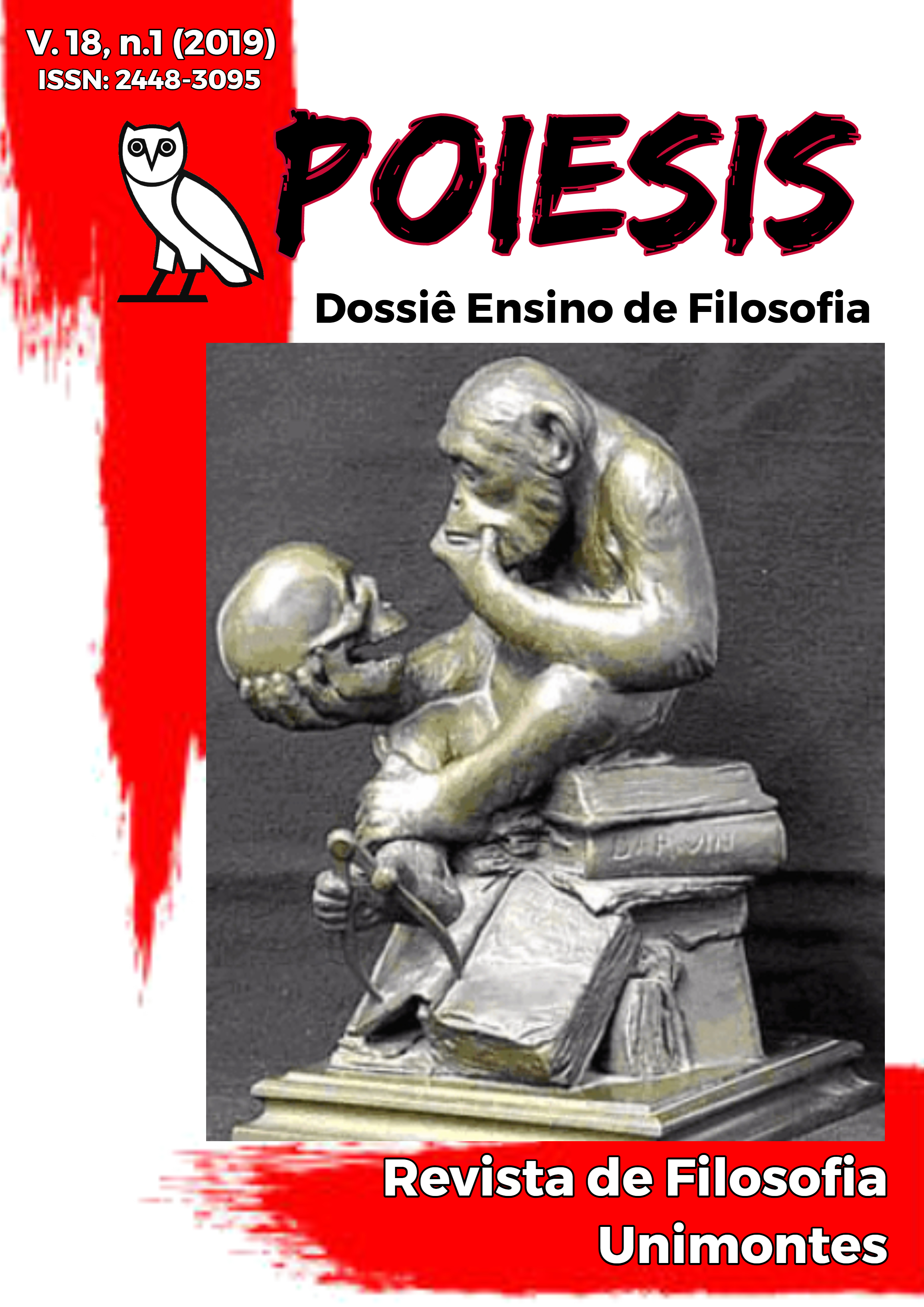The interpretation in Martin Heidegger
Between the as hermeneutic and the apophantic
Keywords:
As-structure. Hermeneutic. Apophantic. Interpretation. Heidegger.Abstract
I propose to think of the conception of interpretation (Auslegung) in Martin Heidegger as an exposition of the real in the articulation of the hermeneutic and apophantic dimensions of "as-structure", which he expounded mainly in paragraphs 32 and 33 of Being and Time.Auslegung is composed by the preposition "aus", which means movement to go out, and "legung", from the verb "legen", means by, that is, the interpretation is the put of the real, its presentation, as a hermeneutic meeting, which opens the presence in its horizon of possibilities of being and of the apophantic, a condition of possibility of predication, formalization of the entities and of communication. This exposition in a meaningful order is oriented in the way in which entities appear on the horizon of the as hermeneutic, showing reality in its meaning and thus revealing the sense of being of presence, whose way of being projected in possibilities takes place in the articulation of the interpretation and in its formal exposition. Thus, when the human presence interprets, it exposes itself in the way it understands to be in a significant conjuncture, an exposition that occurs in a modal form, which is the temporalization itself, revealing that presence is a mode of being of time that resumes the past of various modes projecting themselves into possible futures from the present embodiment. How, however, does the interpretation in the structure lie as? In what way are they constituted and what brings together the apophantic and the hermeneutic, and, by bringing together, does it make it possible to differentiate interpretations? What does interpreting mean to Heidegger?
Downloads
References
FOGEL, Gilvan. Homem, realidade, interpretação. In. Ekstasis: Revista de Hermenêutica e Fenomenologia, v1, n 1, 2012.
_____. Sentir, ver, dizer: cismando coisas de arte e filosofia. Rio de Janeiro: Mauad X, 2012.
HEIDEGGER, Martin. Interpretaciones fenomenológicas sobre Aristóteles – Indicacion Hermeneutica. Madri: Editorial Trotta, 2002.
____. O conceito de tempo. Lisboa: Ed. Fim de século, 2008.
____. O princípio da identidade. São Paulo, SP: Abril, 2005a.
____. Que é Metafísica? In: Conferências e escritos filosóficos. Trad. Ernildo Stein. São Paulo: Abril Cultural, 1979.
_____. Ser e Tempo. Petrópolis, RJ: Ed. Vozes, 2005.
MELO, Rebeca Furtado de. Entre compreensão e interpretação: para uma hermenêutica filosófica no pensamento de Heidegger. In. Ekstasis. Revista de Hermenêutica e Fenomenologia, v. 2, n. 1, 2013.
PESSOA, Fernando. Verdade, liberdade e destino no pensamento de Heidegger. São Paulo, SP: Ed. Chiado Books, 2016.
STEIN, Ernildo. Aproximações sobre Hermenêutica. Porto Alegre: Edipucrs, 2004.
____. Introdução ao pensamento de Martin Heidegger. Porto Alegre: EDIPUCRS, 2011.
Downloads
Published
How to Cite
Issue
Section
License
Copyright (c) 2021 Revista Poiesis

This work is licensed under a Creative Commons Attribution-NonCommercial-NoDerivatives 4.0 International License.





.png)

